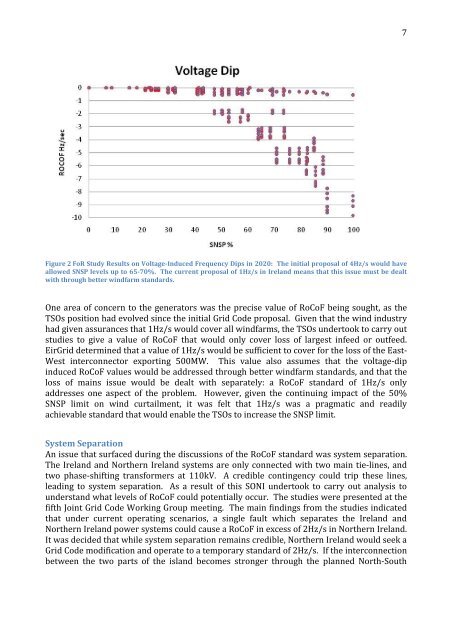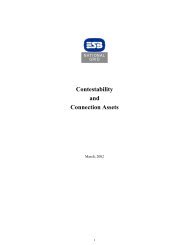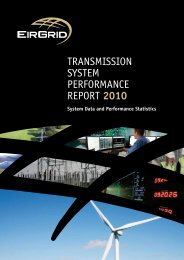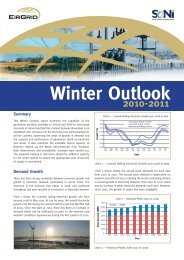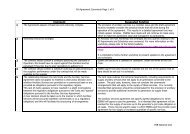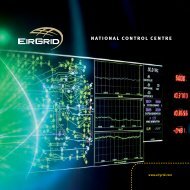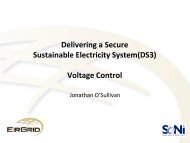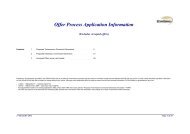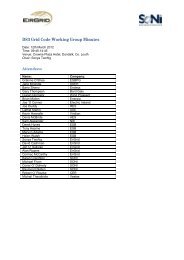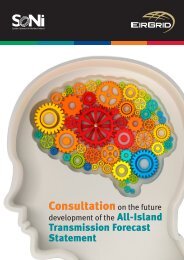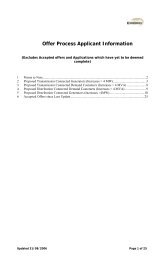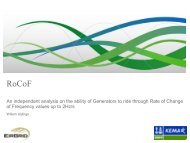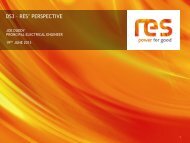RoCoF Modification Proposalâ TSOs' Recommendations - Eirgrid
RoCoF Modification Proposalâ TSOs' Recommendations - Eirgrid
RoCoF Modification Proposalâ TSOs' Recommendations - Eirgrid
Create successful ePaper yourself
Turn your PDF publications into a flip-book with our unique Google optimized e-Paper software.
7Figure 2 FoR Study Results on Voltage-Induced Frequency Dips in 2020: The initial proposal of 4Hz/s would haveallowed SNSP levels up to 65-70%. The current proposal of 1Hz/s in Ireland means that this issue must be dealtwith through better windfarm standards.One area of concern to the generators was the precise value of <strong>RoCoF</strong> being sought, as theTSOs position had evolved since the initial Grid Code proposal. Given that the wind industryhad given assurances that 1Hz/s would cover all windfarms, the TSOs undertook to carry outstudies to give a value of <strong>RoCoF</strong> that would only cover loss of largest infeed or outfeed.EirGrid determined that a value of 1Hz/s would be sufficient to cover for the loss of the East-West interconnector exporting 500MW. This value also assumes that the voltage-dipinduced <strong>RoCoF</strong> values would be addressed through better windfarm standards, and that theloss of mains issue would be dealt with separately: a <strong>RoCoF</strong> standard of 1Hz/s onlyaddresses one aspect of the problem. However, given the continuing impact of the 50%SNSP limit on wind curtailment, it was felt that 1Hz/s was a pragmatic and readilyachievable standard that would enable the TSOs to increase the SNSP limit.System SeparationAn issue that surfaced during the discussions of the <strong>RoCoF</strong> standard was system separation.The Ireland and Northern Ireland systems are only connected with two main tie-lines, andtwo phase-shifting transformers at 110kV. A credible contingency could trip these lines,leading to system separation. As a result of this SONI undertook to carry out analysis tounderstand what levels of <strong>RoCoF</strong> could potentially occur. The studies were presented at thefifth Joint Grid Code Working Group meeting. The main findings from the studies indicatedthat under current operating scenarios, a single fault which separates the Ireland andNorthern Ireland power systems could cause a <strong>RoCoF</strong> in excess of 2Hz/s in Northern Ireland.It was decided that while system separation remains credible, Northern Ireland would seek aGrid Code modification and operate to a temporary standard of 2Hz/s. If the interconnectionbetween the two parts of the island becomes stronger through the planned North-South


